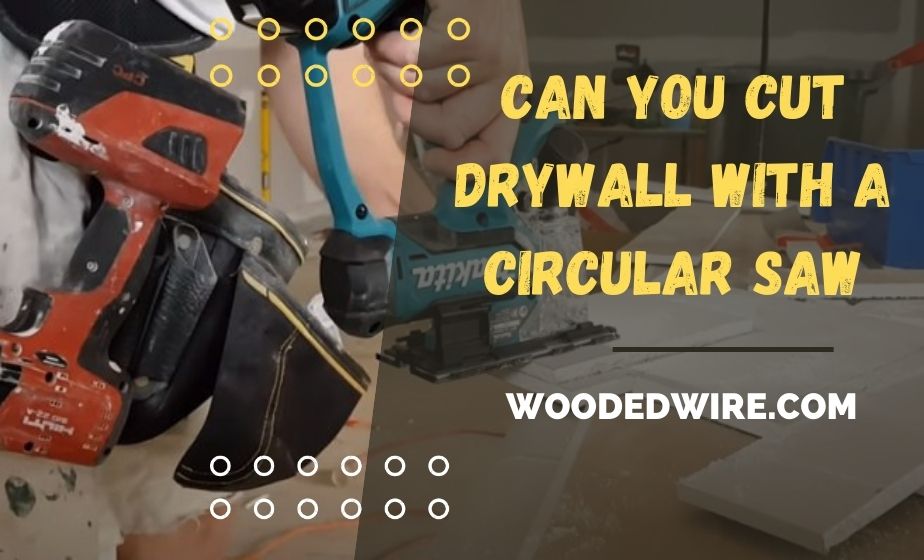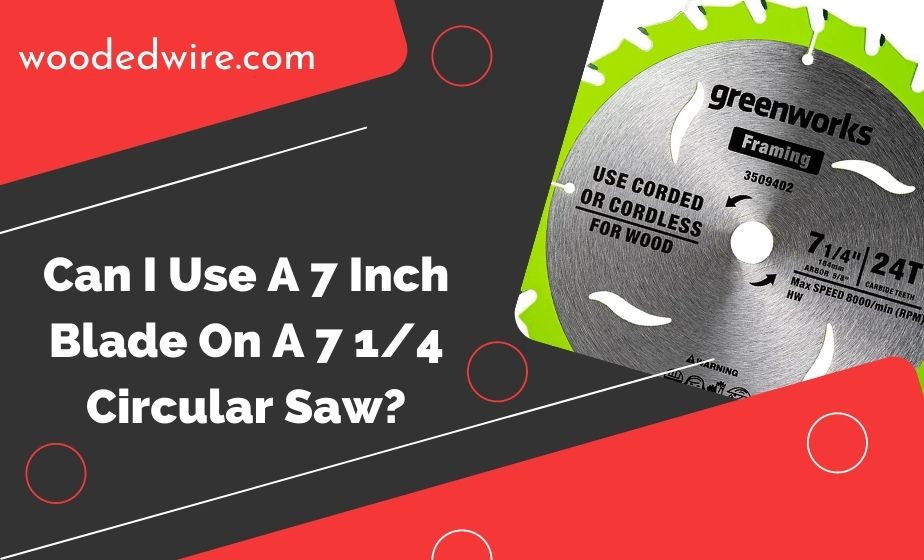I always used to think that the work of drywallers was effortless. I have often seen many skilled drywallers put panels on a ceiling alone, and it seemed easy while seeing. Later, I tried once by myself and realized how foolish I was!
It is tough to do, and I finally understood my fault. Sharing my story regarding materials to use for drywalls. I was an absolute novice in drywall work.
Little do I know about the materials. One of my friends suggested using a circular saw as I need to make cutouts in drywall. I started my experiments back then.
And today, I can assure you that I know these things well. Can you cut drywall with a circular saw?
Well, I am reading elaborately to help all the beginners. I have suffered a lot in choosing the exact material and so, here to reduce the hassles for people like me.
What is drywall?
The U.S Gypsum Company invented drywall in 1916. Small, fire-resistant tiles were initially used for marketing the product. However, multi-layer gypsum and paper sheets were introduced after a few years.
Drywall is a typical building material used to make the inside walls of homes, workplaces, and other buildings. This material is lightweight. What is it made of?
One thin gypsum and two thick sheets of heavyweight paper make up its components. Usually, fiberglass or paper is used to make the paper.
Many people get confused about the proper thickness of drywall. It is not wrong as it is one of the most critical issues before buying drywall sheets. The thickness depends on the usage.
I have also seen people giving multiple layers to make it soundproof and fire-resistant. Mainly, it remains between half an inch to five and a quarter inches. However, drywall panels of interior walls are standard to be half inches thick.
The thinnest one is used on curved walls. The flexibility of the wall increases because of the thinness. It becomes like the regular one once it is dry.
On the other hand, the thickest drywall is used mainly in commercial works. One of the plus points of the thickest one is that it gives fire protection for about half an hour.
There are two most common varieties of drywall. One is fiberboard, and we all know fiberboard is made from wood. Another type is called paper-faced panels.
I remember we used paper-faced panels during the construction of our new home. I liked the outcome of it.
Types of drywall
There are many types of drywalls available in the market. People choose their one based on the kind of work, availability, etc. Here are a few types of drywalls we are discussing:
Regular drywall
Regular drywalls are the most used ones in houses and also commercial projects. People also call it whiteboard. The thickness of regular drywalls or whiteboards for residential purposes should be half an inch.
Soundproof drywall
You must be thinking about what is new in it. All the drywalls available in the market have soundproofing qualities. But these soundproof drywalls have a little more extra.
We all want our living room to be quieter than the house’s other rooms. Soundproof drywalls are used to do that. It has more gypsum, polymer, etc., which helps increase the STC ( Sound transmission class).
But let me tell you one thing: it is harder to work with soundproof drywall. Moreover, these are supposed to be denser than whiteboards or regular drywall.
VOC-absorbing drywall
These types of drywalls are comparatively new in the market. It has a unique feature in it. These drywalls can absorb harmful chemicals.
Cleaning products we use daily contain many chemicals that are bad for our health. Especially if we have children at home, it can be dangerous for them.
VOC-absorbing drywalls are best to remain safe. You will be shocked to know that these drywalls provide service for up to 75 years even if you paint the cover with the wallcovering.
Fire-resistant drywall
Our garage and basement need extra fire protection. Equipment that can be a cause of the fire remains in these places. So, fire-resistant drywalls can be perfect for these kinds of sensitive areas.
What does fire-resistant contain to protect from fire? Well, fire-resistant drywalls have fiberglass. I agree it can not immediately stop the fire, but it slows down.
Fire-resistant drywalls are two kinds; one is type x, and the other one is type c. Type x is comparatively thicker and provides a minimum of one hour of protection from fire. Type c is used for the ceilings because this type of fire-resistant drywall does not shrink while burning.
Tools for cutting drywall
As I have previously said, cutting drywall is more complicated than it seems. I remember the first time I attempted to cut drywall; it took an entire day for me to complete it. My whole house became messy.
No, I am not here to frighten you more. It happens because of choosing the wrong tool. Moreover, you must know the best ways for cutting drywall.
The right tool can save time, energy, and money. That is why it is necessary to know how to choose first and what to choose.
Razor knife
The first and foremost thing I want to say is that a good quality razor knife is a must-have for completing every drywall project. I bought it for the first time without knowing its uses.
A Razor knife is also the most widely used tool for cutting drywall. It is also called a utility knife. It amazed me later when I realized the necessity of this tool.
Oscillating Multi-tool
I was first introduced to this versatile tool through one of my cousins. As far as I know, almost all the major manufacturers make this tool. Trust me; this tool can do difficult jobs quickly that you can not even imagine doing with other tools.
Keyhole saw
Sometimes we need a tool instantly to cut a small hole. This simple hand tool can be your best friend for more minor cuts. It has many other names such as drywall saw, jab saw, etc.
Circular saw
Probably the most asked question about drywalls is about a circular saw. Can you cut drywall with a circular saw? Finally, I am ready with my answer after many experiments and research.
Related Article: Best Circular Saw With Electric Brake
Related Article: Best Circular Saw With Laser Guide
Related Article: Best Circular Saw Under $150 And $75
A circular saw is a versatile tool, and you can cut drywall with it. Even cutting drywall with a circular saw is relatively easy. Place the blade at the necessary depth using a straightedge guide to cut through the sheet of gypsum.
But there are some opposing sides to a circular saw too. If you cut drywall with a circular saw blade, you will see a lot of dust around.
Yes, dust is produced by a circular saw, making the place messy. It can cause several health hazards. I am damn sure that you will decide to choose other alternatives then.
Frequently Asked Questions:
What is the Difference Between Drywall and Plaster?
There are so many differences between drywall and plaster. The material used for drywall is softer than plaster. For this reason, this drywall does not crack easily. Also, plaster is a bit more expensive than drywall.
Why is the Name ‘drywall’?
Drywall is the name given to a material that is applied to walls without the use of water. It was a problem with plasters and was solved by drywall.
What Did People Use Before the Drywall?
Many years ago, before drywall was invented, people used to make buildings and other structures with layers of wet plasters. It was also called laths.
Is Plaster More Soundproof Than Drywall?
This fact can not be denied that plaster is more soundproof to some extent. Plaster can be capable of blocking sound transmission higher than drywall.
Should I Keep a Gap Between Drywall Sheets?
Yes, there should always be half an inch gap between drywall sheets. This prevents the drywall from cracking.
Are Drywalls Cheap?
We know that most wood materials are costly. Plywood is one of them. Drywalls are cheaper than plywoods.
Conclusion
The popularity of drywall is increasing day by day. People depended on plaster for hundreds of years before drywall was invented. As a result, it took a lot of time to make buildings and interiors.
I have already discussed the fire-resisting ability of drywall, and it is better than plaster. When drywall is used in place of plaster, walls that would ordinarily take weeks to construct can be finished in a matter of days at a lower cost. Moreover, fixing damaged drywall is simple and faster.
Recently I have noticed about ‘eco-friendly drywall .’The idea seemed nice to me. Also, it has the same specialties as regular drywall, so it can be worth using.
Let’s come to the confusing part. People, especially beginners, can not decide which tool they should use for different works. They end up asking so many questions that are not wrong because we all were beginners one day.
I have already talked about crucial issues. Can you cut drywall with a circular saw? A Circular saw is excellent, but it can give you hassle with the dust.
It is one of the most asked and answered by me. So, I suggest you use every tool but for different purposes.



